If you want to enjoy the best fall harvest ever, you should become familiar with the different types of sugar plum trees that you may grow in your yard. You can’t beat them for a wonderful late summer sweet treat, and once they get going, they’re prolific.
The best time to grow bare root plum trees is between November and March. They’re in their dormant stage, which means they’ll establish themselves quickly and burst into life in the spring.

They’re also an excellent value and give you a high-quality tree for a low price.
It’s critical to learn which types are best for eating and which are better for cooking when choosing a plum tree for your yard.
To assist you in narrowing down your selections, we’ve produced a list of the best sugar plum trees to plant that match all of the requirements, spanning from ancient to modern types.
1. ‘Coes Golden Drop’ Plum
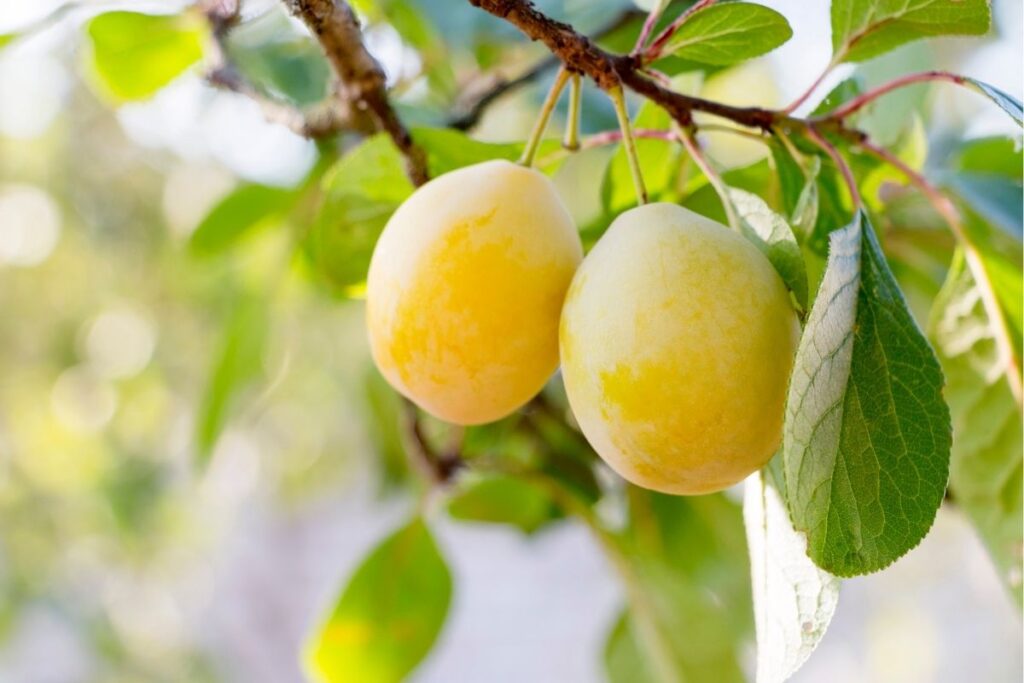
This traditional golden fruiter is regarded as one of the tastiest English plums. It may be consumed raw or cooked.
It blends the delicate, rich flavor of greengage with the acidic sharpness associated with more vibrant plum cultivars.
This unusual combination is most likely the result of its origins as a gauge pollinated by an antique French plum known as ‘White Magnum Bonum’.
Harvested in mid-autumn, it grows to a maximum height of 4 meters (about 13.1ft).
2. Damson ‘Farleigh’

This sturdy damson (alternatively called ‘Farleigh Prolific’) dates all the way back to the early 1800s. It is renowned for its astounding cropping ability.
These dark-colored fruits are widely used in pies, wines, and jams. Additionally, ‘Farleigh’ damsons are resistant to silver leaf disease to a great degree.
It is recommended that you invest in one with a ‘St Julien A’ rootstock to obtain the maximum yields. Mid-September marks the start of harvesting. The tree will eventually reach a height of around 4 meters (13.1ft).
3. Greengage ‘Oullins Golden Gage’
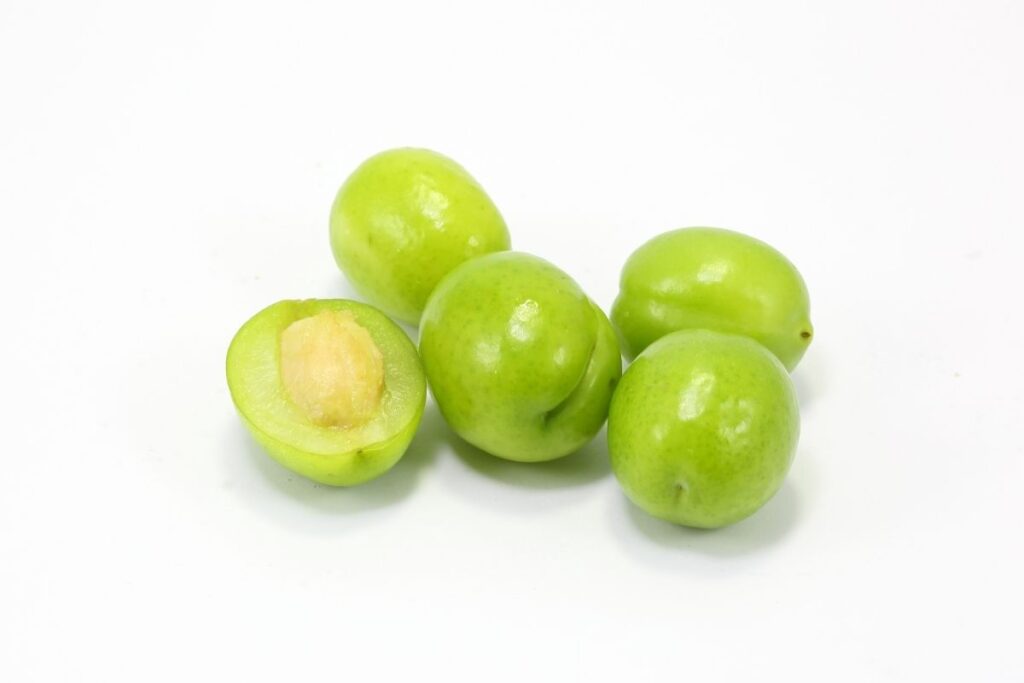
This fragrant, large, and pleasantly plump golden greengage dates back to the mid-1800s in Lyons and is widely considered an excellent choice for the fruit tree aficionado.
While gauges require more heat to attain their ideal sweetness level than damsons, this gauge is more resistant to cold weather.
The fruits, which mature in mid-August, are wonderful for desserts and other culinary uses. While they are not as juicy as others, they are perfect for freezing.
Eventually, the trees will reach a height of 4.5 meters (14.8ft).
4. Victoria Plum
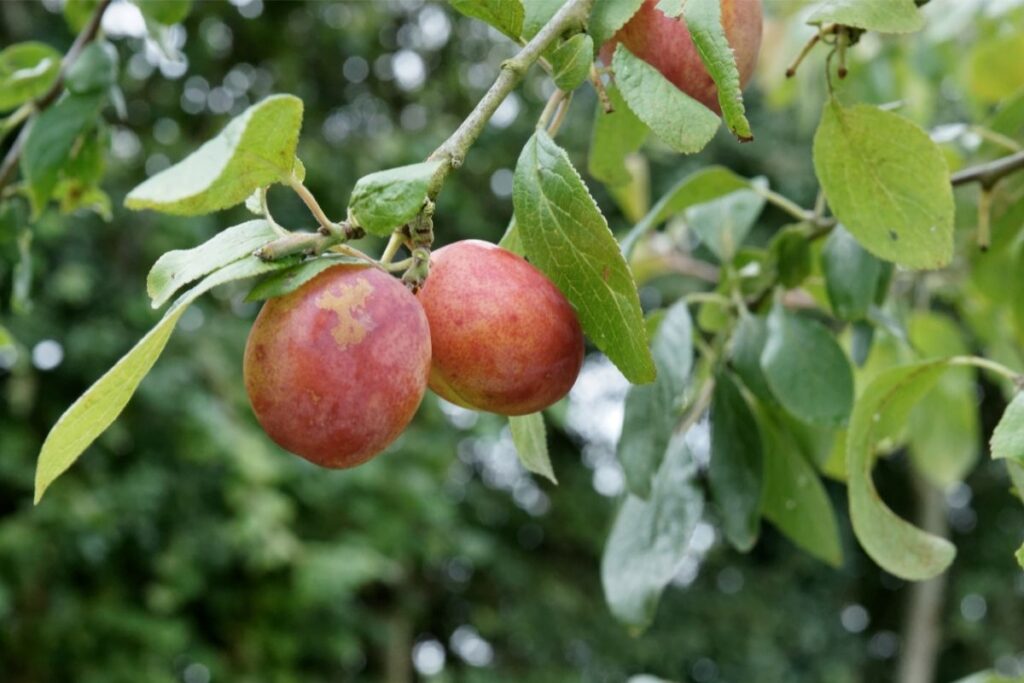
This well-known plum tree species is one of the most popular to own. It gives fruit abundantly and consistently. The pink, medium-sized fruits appear in late summer.
This cultivar is self-fertile and so does not require pollination.
If you’re interested in cooking with them, they make fantastic pies and jams and are also deliciously eaten fresh off the tree in late August. They may grow to a height of 4.5 meters (14.8ft).
5. Avalon Plum
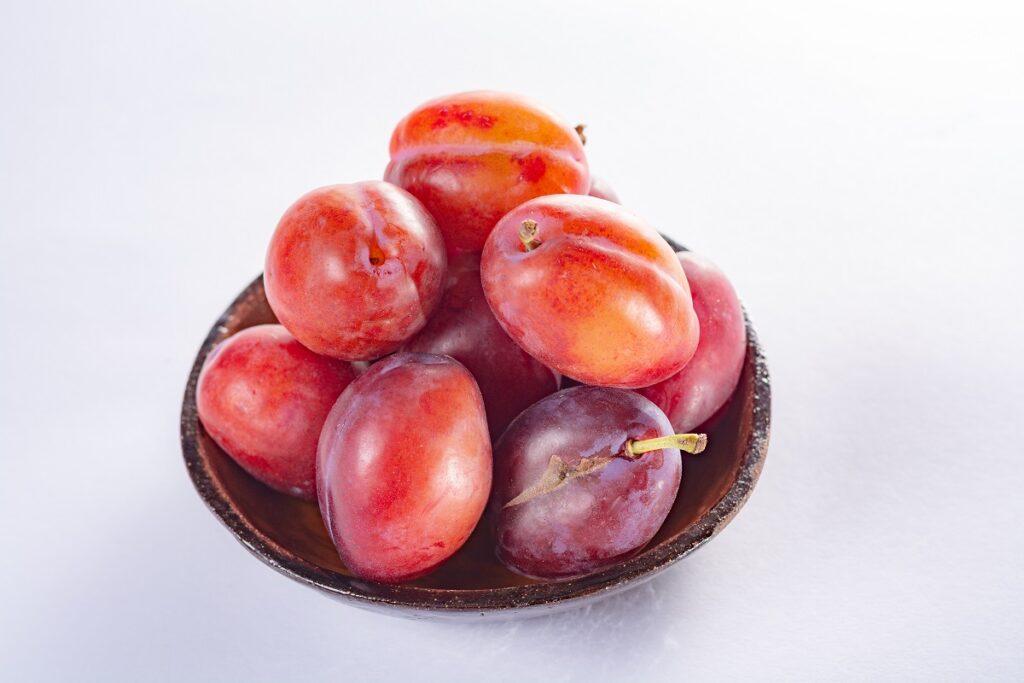
‘Avalon’ is a more recent cultivar that yields enormous, oval-shaped fruits with a golden-red flush. These are best eaten fresh off the tree since they are slightly juicy, sweet, and have a nice flavor.
When the fruits are a little under-ripe, they also make a delicious jam and bake well in puddings. Additionally, ‘Avalon’ is an aggressive grower that produces clusters of white flowers in the spring. It reaches a maximum height of 2.5–4 meters (8.2–13.1ft).
6. Opal Plum
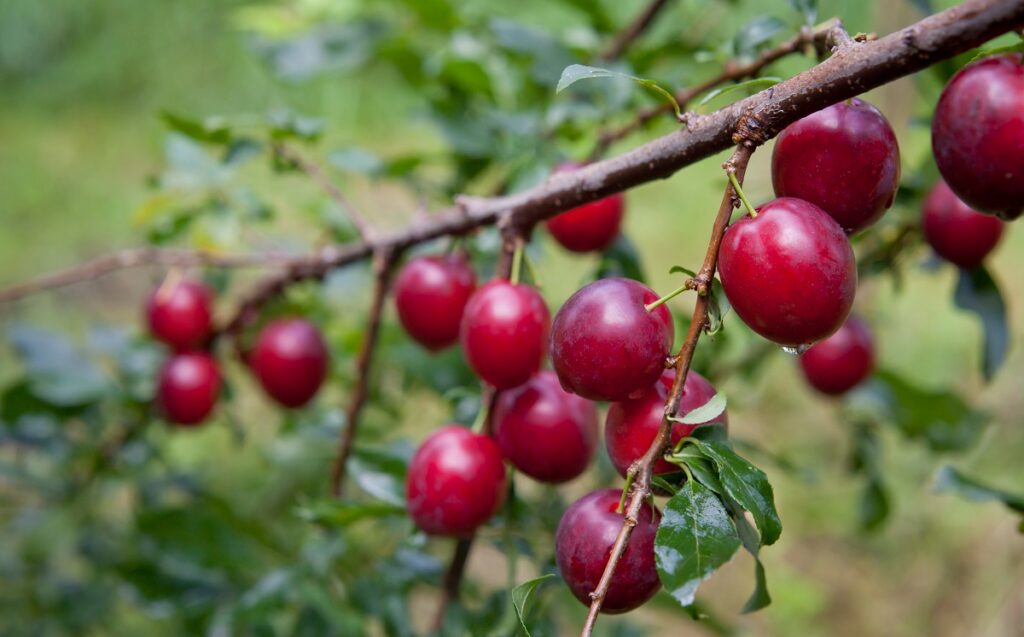
Due to its reliability, this desert plum tree is one of the best to attempt to grow at home. It is exceptionally resilient and produces copious amounts of fruit on strong trees. For the best results, grow alongside another kind of plum tree.
The small, purple fruits develop in late summer and have a superb flavor. The golden flesh readily separates from the stone, making it ideal for cooking. The trees are capable of growing to a maximum height of 4.5 meters (14.8ft).
7. ‘The Czar’ Plum
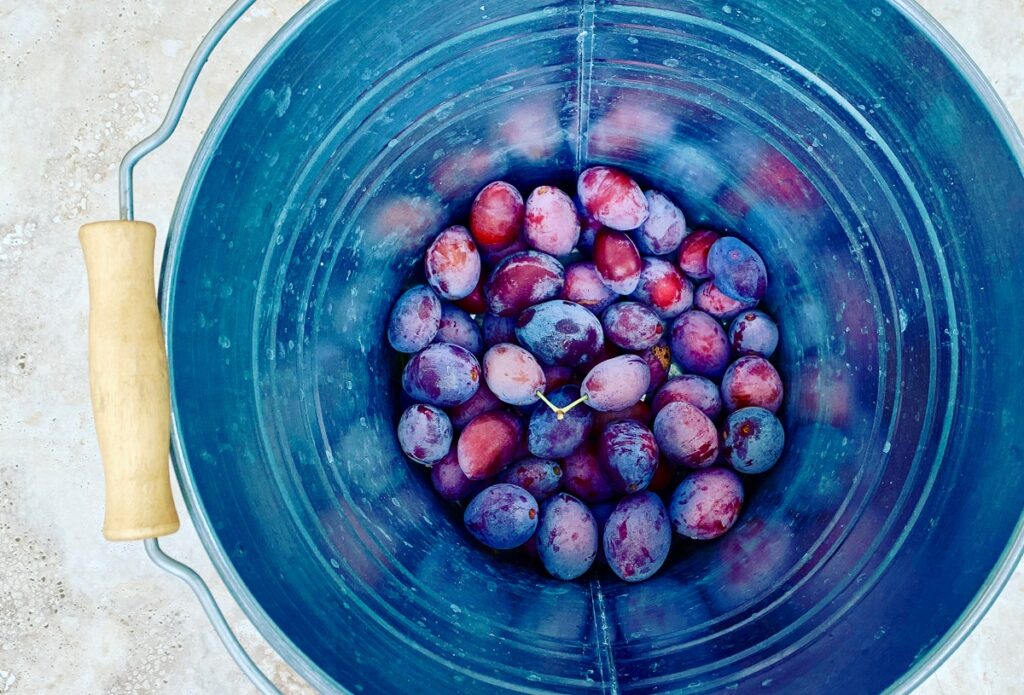
This magnificent blue plum reduces to a beautiful ruby red color when cooked. It is small, robust, and an excellent early season preserves variety. It is especially lovely in the spring when it is carpeted with white blossoms.
This plum has the name of Russia’s Czar, who paid a visit to the United Kingdom in 1874, the year it first appeared. It is tolerant to a wide range of soil types, thrives in warmer climates, and has frost-resistant blossoms.
Early August marks the start of harvesting. Eventually, the tree will reach a height of up to 4 meters (around 13.1ft).
8. Mirabelle De Nancy Plum
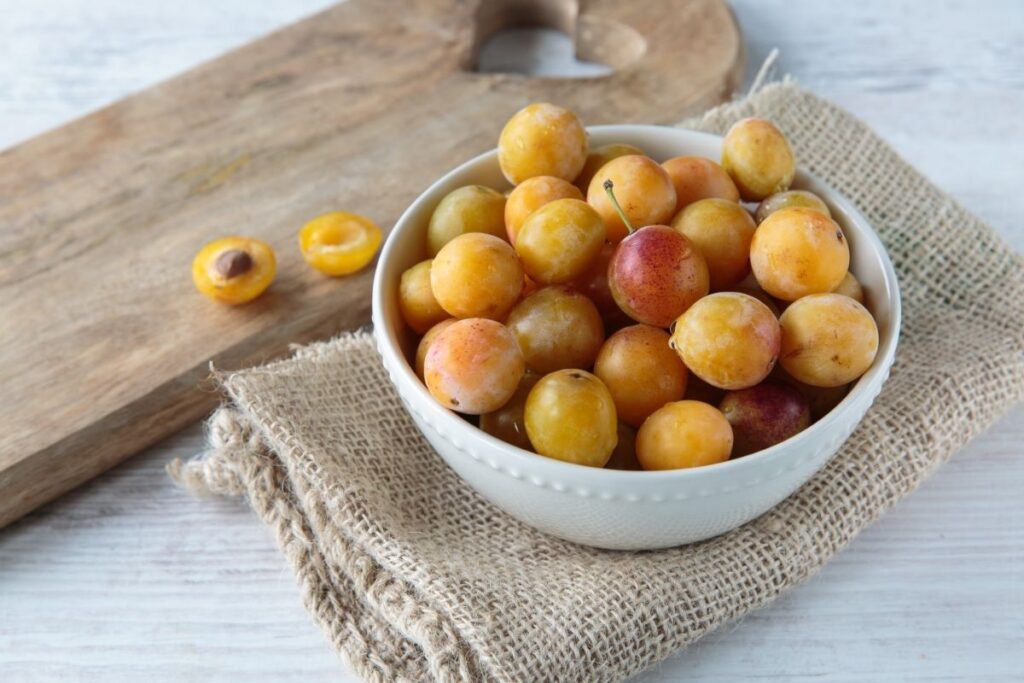
These gorgeous pink and gold fruits, also referred to as cherry plums, are reminiscent of gigantic cherries.
Also known as Mirabelle prunes, these magnificent European heritage plums are prolific growers with a high sugar content, which makes them great for brandies, jellies, and jams.
They may, however, be eaten directly off the tree, which will grow to a height of 4 meters (13.1ft) in your yard.
More Mirabelles include ‘Golden Sphere’, ‘Ruby’, and ‘Plum de Metz’. Harvest the fruit from late July through early August.
9. ‘Prune Damson’ Damson
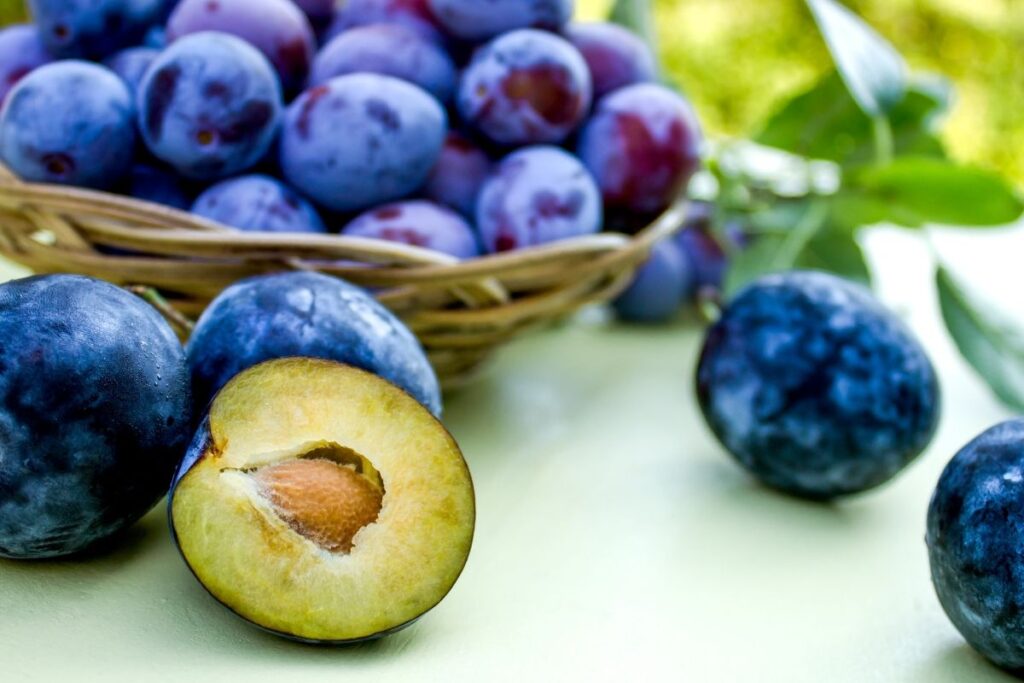
Also called ‘Shropshire Prune’ or ‘Shropshire Damson’, this bright purple beauty grows vigorously and neatly.
This old English cultivar (dating back to the 1670s) is straightforward and thrives in wet soils and moderate temperatures.
The trees, which reach a height of around 4 meters (13.1ft), also produce lovely spring blossoms, making them a good choice for your plot if you’re looking for some of the more flowering trees. September marks the start of harvesting.
10. ‘Reine Claude Verte’ Greengage
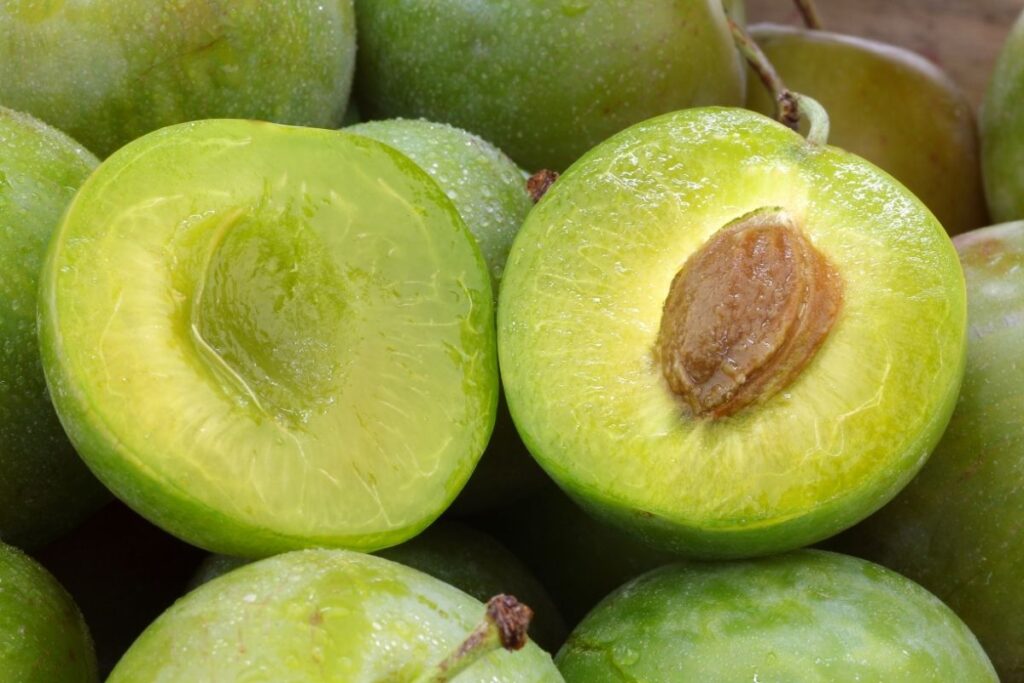
This vigorous grower is prolific, reliable, and very juicy. This fragrant and strong French delicacy is wonderful fresh or cooked into jams and pies, and has an outstanding depth of flavor.
The unusual greeny-golden tint and oval form of this hardy greengage set it apart from other varieties. It is tolerant of most soils except highly calcareous soils.
Harvest the fruit between mid-August and early September. The trees are slightly higher than other varieties, growing to a maximum height of 5 meters (16.4ft).
11. ‘Laxton’s Delight’ Plum
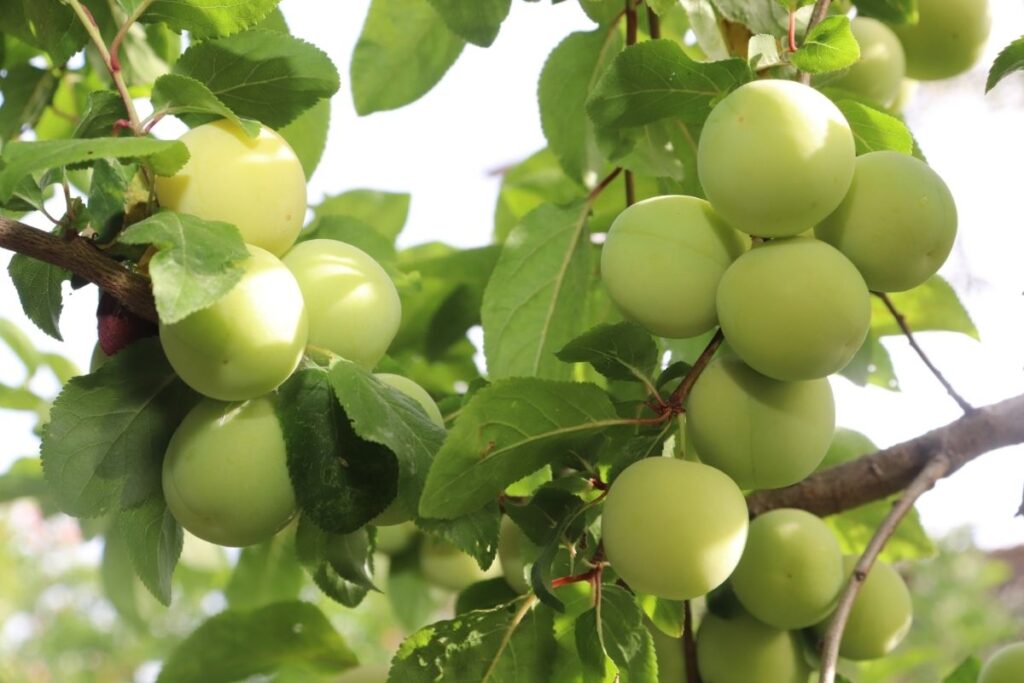
This dessert plum has an exceptional flavor and matures in late summer with enormous golden fruits.
Due to the fact that it is mostly self-fertile, it will bear fruit on its own. Cropping will be facilitated by the presence of another plum variety of the same or a different kind that belongs to the same or a neighboring pollination group.
This variety grows to a height of 2.5–4 meters (8.2–13.1ft). Maintain its health by pruning.
12. ‘Pershore’ Plum
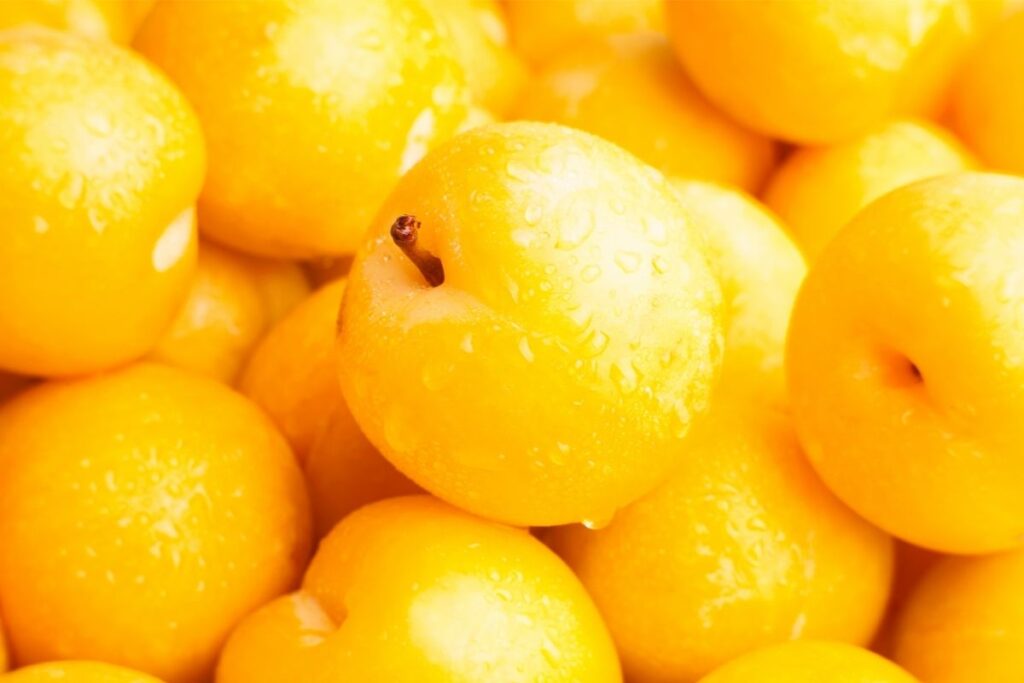
‘Pershore,’ also known as the ‘Yellow Egg Plum,’ is an excellent plum tree to grow if you want traditional, old-fashioned cooking. Large fruits provide plentiful and consistent crops with a sweet and exquisite flavor.
They’re delectable when fully ripe and picked and eaten directly from the tree. Additionally, they are ideal for cooking in sweets and bottling.
It is a low-maintenance, disease-resistant, and exceptionally durable plant, which makes it a good choice for beginners. It reaches a maximum height of 2.5–4 meters (8.2–13.1ft).
13. Shropshire Prune Damson
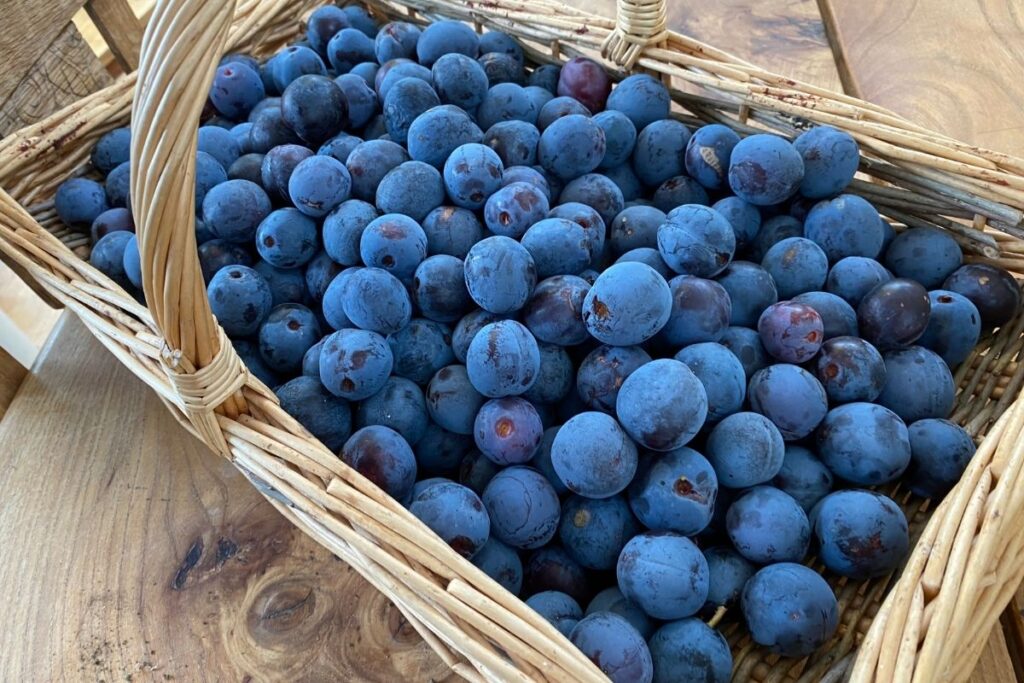
Shropshire Prune is a little hedgerow damson that blooms in the spring and has a rich damson flavor. They’re perfect for jellies, jams, wines, and pie.
This is a hardy damson tree that thrives in nearly every temperature zone. Shropshire Prune also benefits from self-fertilization, as it is not dependent on another tree for pollination.
14. Oullins Golden Gage Plum
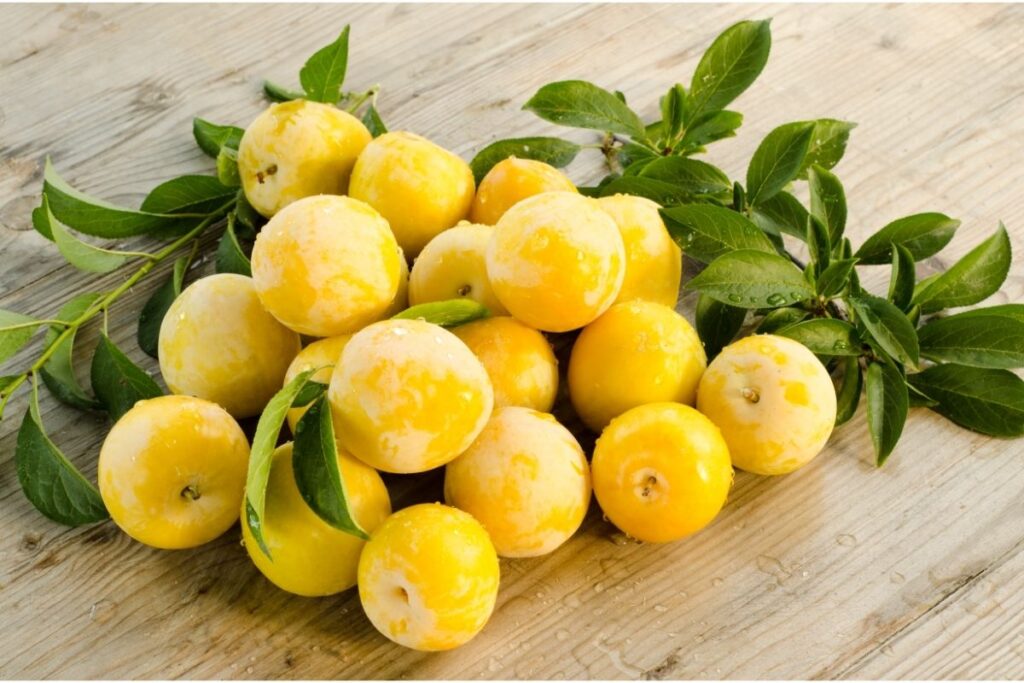
The gauges on this tree are enormous and spherical in shape, with a beautiful golden yellow exterior and translucent yellow insides.
The Golden Gage fruits from Oullins are delectable, with a powerful, somewhat sweet flavor. They are ideal for bottling, freezing, and fresh eating.
Oullins Golden Gage thrives in damp climates, though they love the sun as well. They are also self-fertile, making them a great choice for areas with only enough room for one tree.
Plant this award-winning cultivar in a sunny, protected location.
15. Old Greengage Plum

Old Greengage is a Middle Ages classic tree. It is well-known for its unique gauge flavor. Although the fruits are little, they are unbelievably delicious, setting the bar for other varieties.
Gages are collected in early August once they have ripened to a greenish-yellow color. Although Old Greengage is self-fertile and does not require pollination, a good pollinator will aid in harvesting.
16. Jubilee Plum
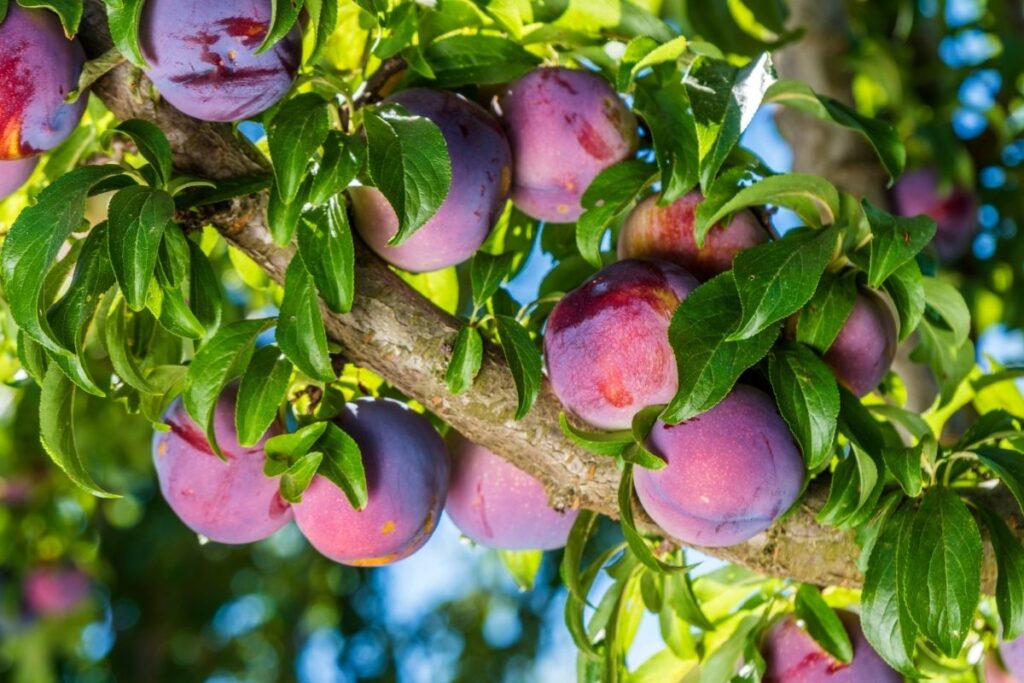
The jubilee plum tree produces reddish-purple plums with great, balanced sweetness. They may be eaten fresh or cooked for James or pies or used for bottling.
Jubilee is a plum similar to the popular Victoria Plum, but with a somewhat greater flavor and a slightly larger size.
Jubilee Plum trees are simple to grow and self-fertile, which means they do not require a pollinator. They harvest roughly a week before Victoria plums do in August.
Final Thoughts
And there you have it, a guide to some of the best Sugar Plum trees out there!
Whether you want to add a new tree to your garden, or to know which will yield the sweetest fruit, there is sure to be a tree here that meets your expectations!







